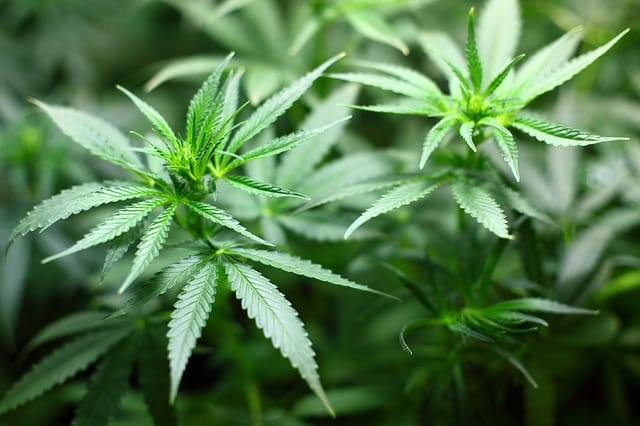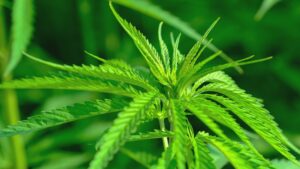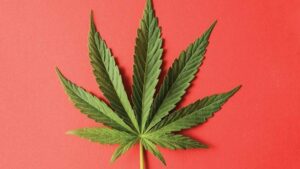Part I: Hemp Policy
Due to hemp’s familial relationship with marijuana, individual states and the U.S. government began to criminalize all cannabis throughout the 20th century. A lack of understanding about the plants’ differences led to laws that restricted or prohibited growing cannabis.
It was 1970 when the U.S. Comprehensive Drug Abuse Prevention and Control Act abolished its legalization by means of the 1937 Marijuana Tax Act. The Act established a zero-tolerance policy for tetrahydrocannabinol (THC), the main psychoactive component produced by cannabis plants. Although plants used for marijuana production are distinct from those grown for fiber production, federal law lumped them together and prohibited their use for nearly 50 years.
While the 2018 Farm Bill radically overhauled America’s relation to hemp and hemp products, the 2014 Farm Bill cleared a path for legalized cannabis production. In Section 7606 of the 2014 Farm Bill, states were given authority to implement laws allowing state departments of agriculture and universities to grow hemp for research or pilot projects.
“The farm bill changed how cannabis is treated under the Controlled Substances Act (CSA),” says Lowell Schiller, U.S. Food and Drug Administration associate commissioner for policy. “Among other things, this law removed a category of cannabis known as hemp from CSA’s definition of marijuana, which means that hemp is no longer an illegal controlled substance under federal law.
“The farm bill defines hemp as cannabis with no more than 0.3% by dry weight of the psychoactive compound delta-9-tetrahydrocannabinol, or THC. Cannabis plants and derivatives with higher THC content, including marijuana, are still under the CSA.”
According to Wendy Mosher, CEO of New West Genetics, the only thing that distinguishes hemp from marijuana is the amount of THC produced within the plant. Mosher points out that THC is one of many cannabinoids in the species Cannabis sativa L., but the only one proven to give the user a “high.”
Cannabinoids are found in both high THC cannabis and low THC cannabis.
Charged with the task of working with farmers and ranchers to develop and implement regulations and protocols for the commercial production of industrial hemp in the United States is U.S. Department of Agriculture Undersecretary for Marketing and Regulatory Programs Greg Ibach.
After hundreds of meetings and consultations with stakeholders and interested parties in Washington, D.C., and in the states, an Interim Final Rule is undergoing an interagency review.
In a report to the Senate Committee on Agriculture, Nutrition and Forestry, Ibach said he hoped to issue regulations in the Fall of 2019 to accommodate the 2020 crop year.
“Once the regulation is published and becomes effective, AMS (Agricultural Marketing Service) will move quickly to establish the program,” he said. “AMS will begin accepting and reviewing state and tribal plans as well as license applications submitted by individuals who are located in states or territories of Indian Tribes that will not operate on their own.”
More than 40 U.S. states have legislation approving the production of non-marijuana hemp. Even Alaska has an approved industrial hemp program, but Kentucky and Colorado are two states with the longest running programs.
Each program must consider a number of aspects, including registration and permitting, reporting, testing and certified seed.
In Colorado, companies that produce hemp seed must follow a number of stringent rules and procedures, including filing an application each year with the Colorado Department of Agriculture. The application costs $500 to file plus $5 per acre, or $3 for each 1,000 square feet, and requires detailed information such as the GPS location of fields and trial sites, plot size, variety name if known and intended use.
Reporting Requirements
As of early September, the state had a list of registered industrial hemp sites totaling 288 pages.
Mosher, who also resides in Colorado, says companies must also complete a number of seasonal reports.
“We must submit a planting report within 10 days of planting in the ground,” she says. “Then, if you move it … for example, if you’re growing in a greenhouse and use clonal production, and you want to move that outside, you have to report that transfer.”
Companies must also report their intent to harvest 25 days prior. This gives enough time for the department of agriculture to test the material if the company were to come up in the random testing cycle.
“So you submit to testing and abide by all product licensing,” Mosher says. “If you’re selling seed, you need to have a seed license, and if you’re selling farm products, you need to have a sales license.”
In Kentucky, Doris Hamilton, who manages the department of agriculture’s hemp program, says all the planting material coming into the state is screened.
Unlike Colorado, Hamilton says Kentucky had no prior strains for hemp production. She explains that producers seeking to bring those materials in have to prove two things:
- It’s a legal source. They have to have a hemp license and be a legal hemp operation in their state of origin.
- When mature, the floral material from the strain will test below 0.3% THC.
Once approved for production, Hamilton explains that the grower must register with the department of agriculture. The department will then issue a license.
“We have GPS coordinates on every field… If law enforcement calls, they get everything. We are an open book to law enforcement in our state.”— Doris Hamilton
“We have GPS coordinates on every field,” Hamilton shares. “We supply all of that to law enforcement. If law enforcement calls, they get everything. We are an open book to law enforcement in our state.”
Like Colorado, planting and harvest reports must be submitted within a given window (15 days).
“We take our sample as close to harvest as possible,” Hamilton says, adding that once the sample is taken, growers have 15 days to get the crop out of the field. She acknowledges they won’t have a THC test result within those 15 days, but says growers can’t commingle or process material until the test results are in.
Another difference between the two states is Kentucky inspects every field/crop in the state; however, not every one is tested. Hamilton admits that crops produced from noncertified seed undergo higher test rates compared to that from certified seed.
So far, eight varieties are prohibited due to testing above the 0.3% threshold for THC.
Erica Stark, National Hemp Association executive director, believes that the future of the industrial hemp market could shift based on how it’s regulated.













